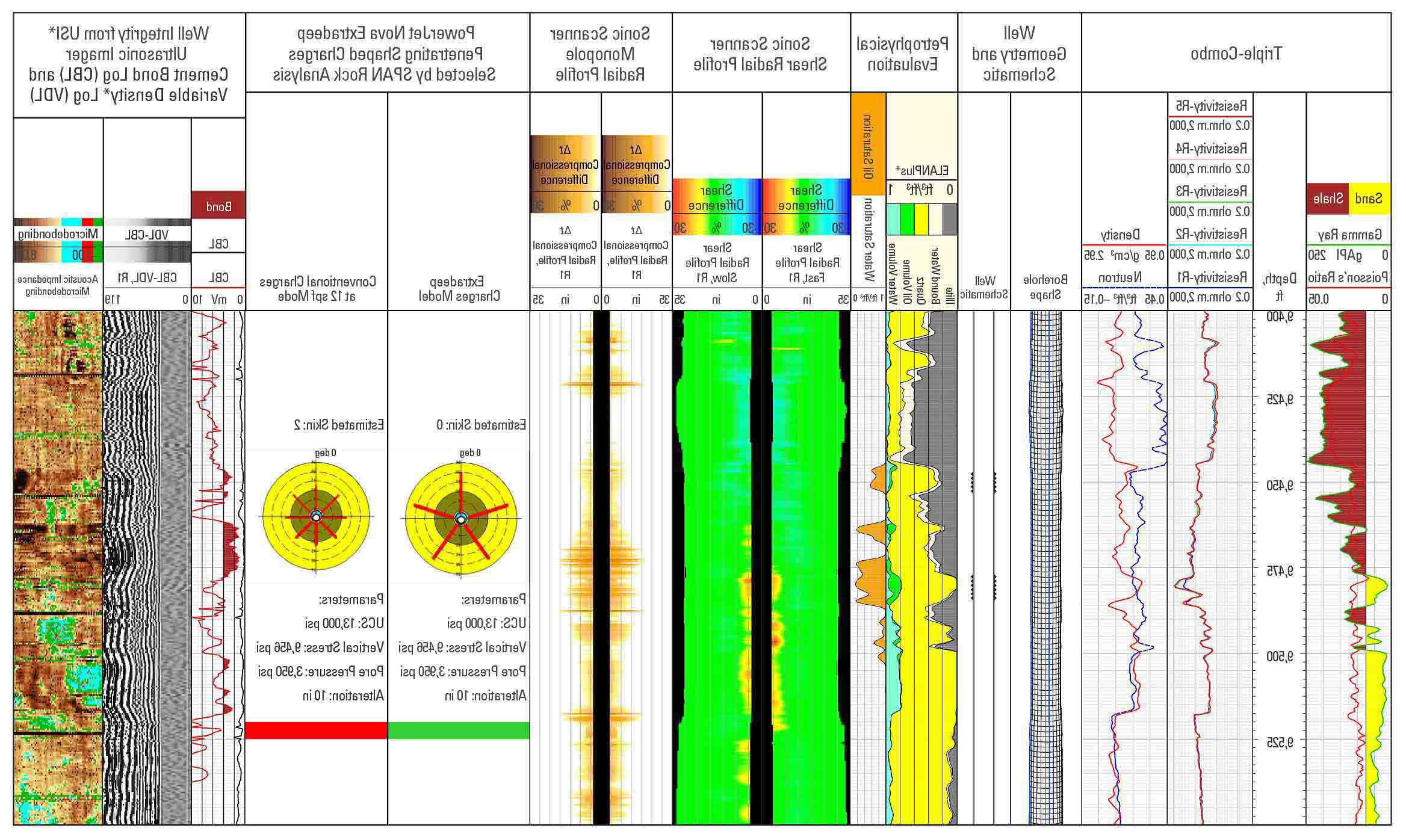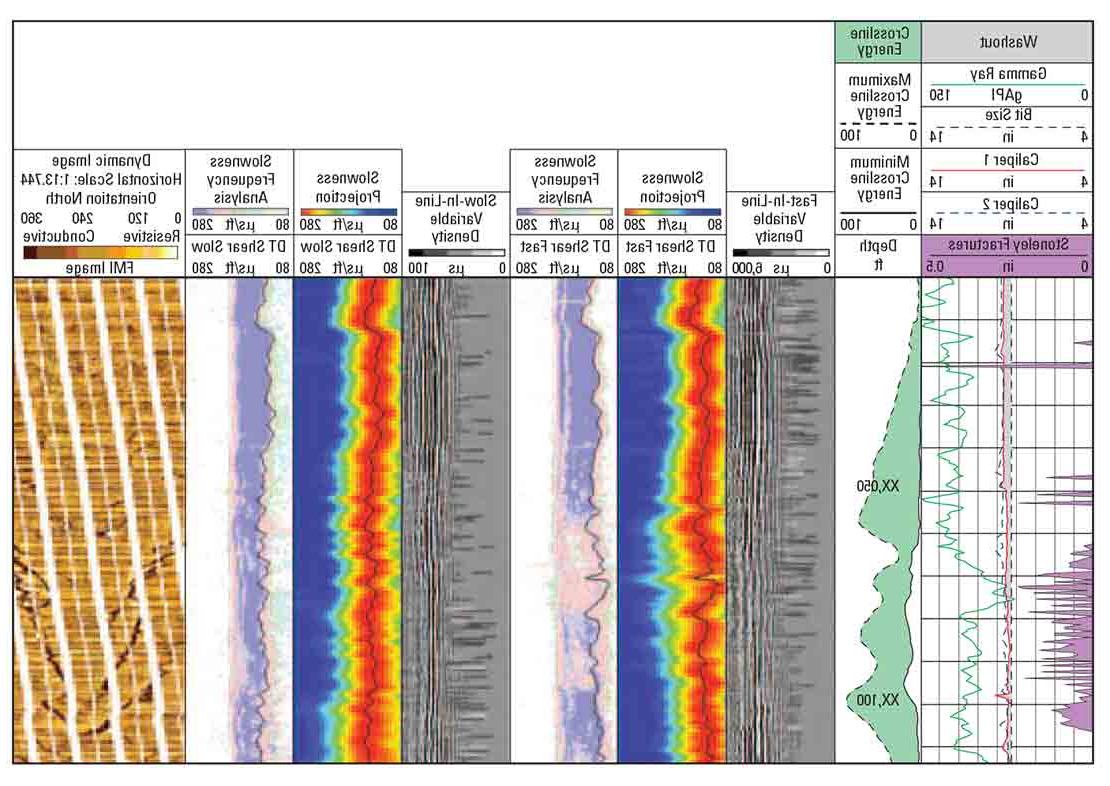3D Far-Field Sonic Service
Automated subsurface feature extraction
Expedite processing and interpretation up to 10× faster than conventional methods.
Acoustic scanning platform

Sonic Scanner acoustic scanning platform accurately measures elastic properties axially, radially, and azimuthally to support geomechanical, geophysical, fractures, and petrophysical modeling.
The integration of multiple monopole and dipole transmitters with 13 receiver stations profiles formations in 3D while simultaneously obtaining a cement bond log when run in cased holes.
Regardless of the formation type and slowness, the Sonic Scanner platform overcomes conventional acoustic measurement barriers through its wide frequency range, multiple monopole and dipole transmitter-receiver spacings, and full characterization.


The 3D far-field sonic service extends sonic imaging far beyond the reach of standard sonic logging while also providing true dip and azimuth. The service enables an automated workflow that rapidly delivers consistent, precise quantitative results up to 10× faster than conventional processing and analysis to bring new insight to understanding your reservoir.
Read More
Integrating data from acoustic measurements with wellbore images and reservoir testing, estimated pore pressures, stress magnitudes, and the fracture gradient refines the mud-weight window to avoid future drilling challenges. Layered shales and fractured formations are readily identifiable to enable drillers to better maintain wellbore stability.
Properly contained hydraulic fractures are designed by using continuous stress profiles based on acoustic measurements because they account for shale layering and differential stress. The accuracy of stress profiles is honed by calibration with dual-packer stress tests and maps of wellbore failure occurrences from breakouts and induced fractures.
Quantification of anisotropy in rock mechanical properties and determination of the maximum horizontal stress guide completion design for achieving optimal production, especially in highly deviated or horizontal wells accessing unconventional reservoirs or where sanding is a concern. Measurement of the extent of the alteration zone and damage effects is used to calculate the necessary perforation penetration, and achieving uniformity in perforation performance is based on understanding stress anisotropy.



Distinguishing drilling-induced from natural fractures and using shear wave anisotropy and Stoneley wave data in conjunction with images to identify existing fractures as open or closed are important considerations for designing completions, targeting hydraulic fracturing, and maximizing production.
Well velocity calibration accounts for shale layering and stress anisotropy to refine the time-depth conversion for more accurate analysis, tie-ins, and use in applications such as seismic inversion.
Simulating complex fracture networks relies on calibration based on acoustic measurements for differential stress, geomechanical strain, and any existing discrete fracture networks.
Sonic Scanner platform logging can be used to relate physical rock properties to seismic data to improve the value of data in modeling.
Our petrotechnical experts work with you to apply advanced interpretation techniques and workflows to deliver answers from measurements made with the Sonic Scanner acoustic scanning platform.
Advanced sonic waveform processing and analysis provide critical information for completion optimization, sanding prediction, wellbore stability studies, and mechanical earth models. Shear wave splitting and orientation of the fast shear azimuth guide lateral well placement, and Stoneley analysis can indicate and characterize fractures as well as reveal formation mobility.
Data from the Sonic Scanner platform is acquired and ready for solutions through integrated Techlog platform workflows for geomechanics, geophysics, fracture evaluation, and petrophysics.
| Interpretation Services for Sonic Scanner Acoustic Scanning Platform | |
|---|---|
| Interpretation Services for Sonic Scanner Acoustic Scanning Platform Wellsite Answers | Interpretation Services for Sonic Scanner Acoustic Scanning Platform
|
| Interpretation Services for Sonic Scanner Acoustic Scanning Platform Geomechanics | Interpretation Services for Sonic Scanner Acoustic Scanning Platform
|
| Interpretation Services for Sonic Scanner Acoustic Scanning Platform Geophysics | Interpretation Services for Sonic Scanner Acoustic Scanning Platform
|
| Interpretation Services for Sonic Scanner Acoustic Scanning Platform Fractures | Interpretation Services for Sonic Scanner Acoustic Scanning Platform
|
| Interpretation Services for Sonic Scanner Acoustic Scanning Platform Petrophysics | Interpretation Services for Sonic Scanner Acoustic Scanning Platform
|